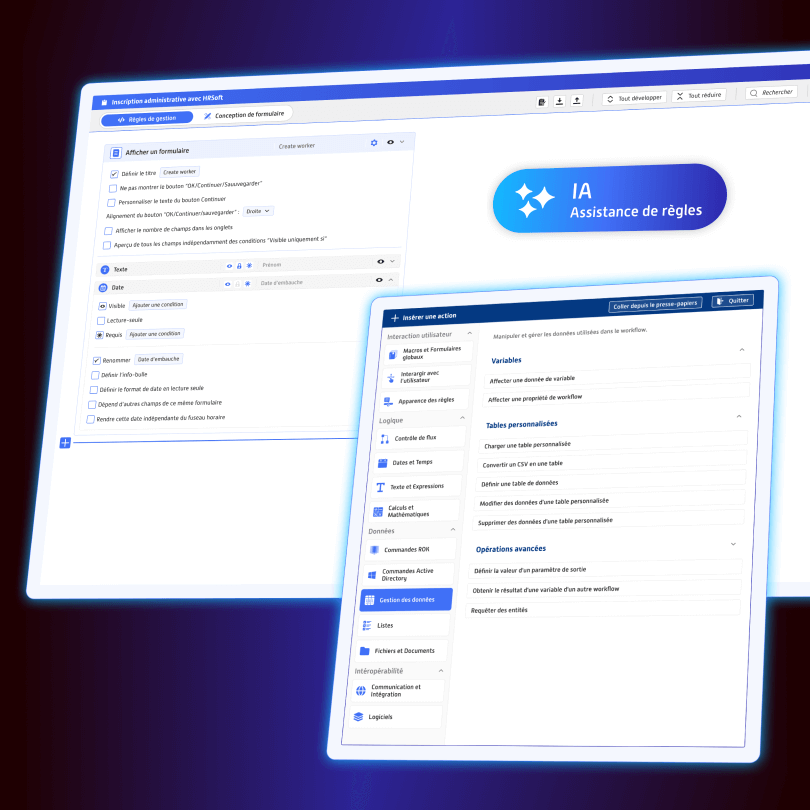Why are BPM tools having a hard time on the markets when they should be praised for anticipating change, promoting evolution, containing risks and transmitting knowledge?
Business Process optimization and Management tools are not properly operated in times of growth, and thus cannot properly function in times of austerity
Like a pendulum, companies oscillate, according to changing economic situations, between innovation and rationalization. We do not see many optimization projects being carried out in times of prosperity, when these would be very useful in more dire times. It is even rarer to see investments in this type of tools in times of crisis, due to lack of time, resources, or because its implementation would be too complex and time-consuming. Entrepreneurs share responsibility in this situation, but we should acknowledge in all fairness, that publishers have yet to offer truly efficient, evident solutions.
Existing solutions are too complex, designed for experts and fail to satisfy company operatives.
BPM tools all participate, in their way, in organization formalization, modeling, optimization, motorization, feedback enrichment… However, they all suffer from over-specialization, as well as overly complex integration, configuration, and maintenance. Designed by experts for experts, with feedback from experts or at least specialized consultants, these solutions fail to reach actual employees, and their “top-down” approach, for lack of simplicity and flexibility, can only be operated by a handful of top specialists. They remain dogmatically cooped up in IS or quality services acting like sanctuaries, and follow company mutations instead of anticipating or supporting them.
Today, employees and operatives need simpler tools, which allow them to gain back control over organization structures and risks, while using and capitalizing collaborator knowledge.
It is high time we reconciled top white collars with other employees, but also Information Systems with the people operating them, by providing simpler, task-oriented, transversal tools that can be easily set up and used by everyone, giving managers new control over their department’s organization. Current models need to be redesigned. Organization structures need to be described and normalized simply, without needing to overwrite existing capitalized knowledge, even if it exists on multiple, seemingly incompatible platforms. Structures need to be accessible to everyone, for information and operation.
A three-way solution: redefining IS management rules, associating risks and projects, federating staff and promoting task synergy throughout the company
Information needs to be transmitted and shared naturally and effortlessly, which implies completely redefining old management paradigms that waste precious time by focusing on individual and group rights managements. Common sense dictates that this task should follow organic and systematic company rules. Risk must be a constant considered alongside an evolving organization structure, and we should have tools allowing to manage and contain them at all times. Finally, in order to exist and be sustained, organization management tools must not be isolated. They should communicate with the IS or HR services, support document and content management, and be used by all relevant services. The broader their reach, the better their performance, reactivity and efficiency.
Conclusion
BPM tools do have a promising future, provided they undergo a triple revolution. Once only for experts, they must become collaborative, contributive, even social, and should be manageable by operative staff, so that the added value coming from specialist and consultant knowledge may become the (high value) tip of the iceberg, instead of the submerged part, like it is today. Content integrity and control must not be handled by the IS, but rather supported by risk analysis, which must be integrated to the solution. Conserving their inherent specific expertise, these tools must be able to capitalize and distribute knowledge from and to everyone involved. When this revolution finally unfolds, assisted organization optimization will finally become the norm, whatever the economic situation may be. Such tools will allow to anticipate and support change, while managing subsequent risks, and making best practices available. They will finally gain popularity and spread to many sectors. They will be praised for their efficiency, their usefulness, and their obvious, immediate Return On Investment.
This is about concept, technology, and models.

